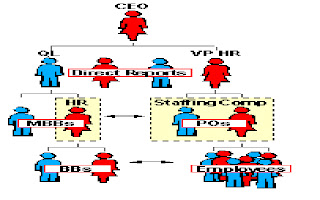· Once committed to Six Sigma methodology, learning can be organized by degree of employee involvement:
- Yellow Belt
- Green Belt
- Black Belt
- Master Black Belt
- Champion
Yellow Belt is a relatively new level, not yet widely accepted. A three- to five-day quick overview gives participants a basic understanding of the Six Sigma methodology, including DMAIC and simple statistical methods. It is often done on-site, given the large number of employees who can participate. Many organizations have gone directly to Green Belt training for all those working on projects. Other approaches may include one-day overviews delivered on-site for upward of $585 per person, followed by Green Belt training.
Green Belt is the role of project participant. Training is typically two weeks, separated by about a month so that the learner can participate in a Six Sigma project. Training consists of the application of DMAIC, project planning, process analysis and statistical analysis. Certification as a Green Belt requires work on a project with a reasonable bottom-line improvement, e.g., $75,000 as quoted by one training supplier. A typical program could cost $5,000 if accessed though open enrollment, not including travel and accommodations. This training is more often done on-site to accrue substantial savings per participant. Some organizations have used successful Green Belts as project leaders.
Black Belt plays the role of project leader and sometimes as coach for a number of projects. Considered the key change agent, the Black Belt must be technically oriented, a master of the advanced tools and a project leader. Training is delivered over four weeks separated so that the learner can lead a Six Sigma project. Training consists of advanced statistical methods, project leadership and advanced Six Sigma methods. Certification as a Black Belt requires leading a project with a higher bottom-line improvement, possibly $150,000. A typical program could cost upward of $20,000 if done as an open enrollment, often the preferred training since an organization would need only about one Black Belt per 50 employees.
Master Black Belt has the role of senior leader, manager of Black Belts, internal consultant and in-house trainer. Training lasts four weeks at minimum, often more depending on additional content. The weeks are separated so that the learner can lead a Six Sigma project. Training consists of advanced statistical methods, project leadership, Six Sigma methods, training capabilities and leadership and communication skills. Certification as a Master Black Belt requires work on three successful projects as a Black Belt. A typical program could cost more than $40,000. Open enrollment is the preferred delivery since an organization would only need one per major business site or unit.
The Champion role is the senior management leader of the Six Sigma implementation. Training of three to four days includes the basics of Six Sigma and is designed to prepare the Champion to give leadership to the Six Sigma team. A typical program could cost upward of $3,000. Open enrollment is the preferred method since an organization would only need one per major business site or unit.
The Executive Overview is offered to leaders and managers who should gain an understanding of “why” and “how” before embarking on a Six Sigma implementation. Training is completed in one day, typically at a cost of $350 per person. Open enrollment, often in major cities, and on-site delivery are available.
Master Black Belt Tom Riley, DuPont’s Global Services Business, shared some learning from the enterprise-wide Six Sigma training effort, which boasts great success: “Don’t start if you are not committed! Pick your best people to be Black Belts, Master Black Belts and Champions. Don’t let statistical purists run the process, and be sure to reward and recognize Black Belts who drive culture change.”




